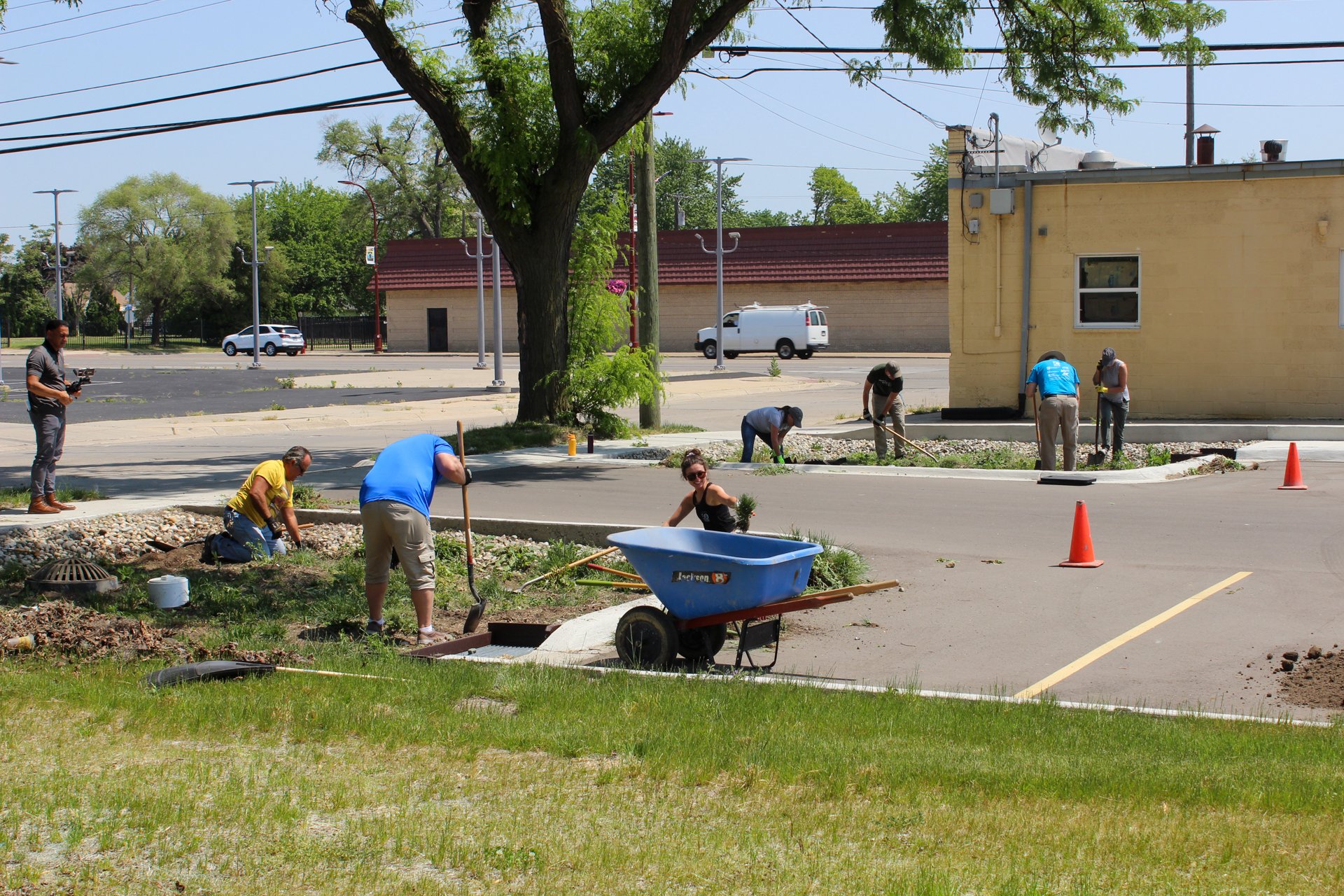2023 Reducing Stormwater Runoff to Bear Creek
CRWC often shares that stormwater is one of the biggest challenges facing the Clinton River and its watershed. The Clinton River watershed is the most populated in Michigan, and more than half of the surface area within the watershed is impervious or developed. When water falls during storms and other precipitation events, it moves over impervious surfaces, such as parking lots, roads, and sidewalks, where it can pick up pollutants and sediments and carry them into our local water systems, including rivers, lakes, and streams.
CRWC works with partners and communities to develop and implement solutions to manage stormwater more effectively.
In 2023, CRWC worked with partners including the City of Center Line, the City of Center Line DDA, Hutch Paving, AEW, and Drummond Carpenter PLLC to complete the final steps in a multi-year WaterTowns green infrastructure project in the City of Center Line.
Land use within the City of Center Line is similar to that of the overall watershed; it is mostly comprised of urbanized, impervious surfaces. Jeffery Schiffman, CRWC Watershed Planner, shares, “The combinations of high population density, expansiveness of impervious surfaces, and aging stormwater infrastructure has impacted water quality within the community and for those further downstream.”
To address these concerns, the parking lot was regraded, repaved, and water was redirected to flow into four catch basins, and in the spring of 2023, CRWC installed four rain gardens in the catch basins. The goal of this project was to improve water quality and minimize stormwater impacts by reducing flow alterations to Bear Creek and the Red Run, as well as help guide future development toward implementing stormwater best management practices using green infrastructure.
These rain gardens, also known as bioretention cells, use native plants and an underground chamber to help capture and utilize the water, preventing it from entering the storm sewer system. Capturing water on the landscape improves water quality, recharges groundwater, reduces flood risks, and protects rivers, lakes, and streams within the Clinton River watershed.
This project has the capacity to treat up to 34,000 gallons of stormwater runoff, capturing 99% of all rainfall events, while the flowering plants provide habitat for pollinators.
Center Line is committed to green stormwater infrastructure and has completed two other installations beyond this project. One installation was undertaken by a private business that installed a pervious paver parking area. The second project involved volunteers who created a rain garden at the City’s Recreation Center.
The collaborative efforts between CRWC, partners, and the City of Center Line represent a great success in managing stormwater within the watershed’s communities. The completion of this project underscores the importance of the proactive measures that communities can take to help improve water quality and contribute to the sustained health of rivers, lakes, and streams within the Clinton River watershed. In 2024, CRWC looks forward to continuing to work with communities to address stormwater and is excited to share steps that residents can take on their own properties to foster resilience and enhance the sustainability of local water resources for future generations.
Author(s): Cole Pachucki


